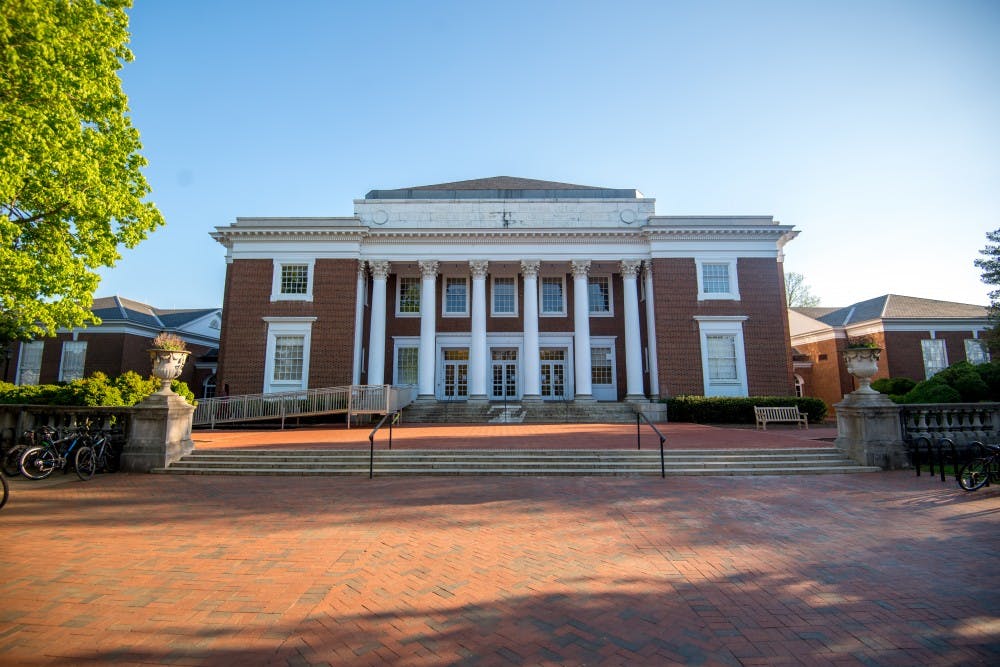The Delta Force Program — an initiative on Grounds which began in 2007 and has focused on a number of sustainability projects — has turned its attention to cutting down carbon dioxide emission at the University in the past few years.
In 2009, the University developed the first phase of the Environmental Footprint Reduction Plan which sought to reduce University greenhouse gas emissions and “enhance the sustainability of the University through specific environmental impact reductions.” The plan considered climate change one of the “most significant and widespread challenges facing our generation and those soon to come.”
In 2011, the Board of Visitors passed a resolution aiming to reduce University greenhouse gas emissions by a quarter of the level emitted in 2009 by the year 2025, from just below 350,000 MTCDEs — metric tons of carbon dioxide equivalent, often used to measure emissions — to around 250,000 MTCDEs. This plan was reiterated in the University’s 2017 Greenhouse Gas Action Plan — by the end of 2017, the program saved over 20,000 metric tons of carbon dioxide from being released from University buildings, surpassing their initial goal of 15,000.
Greenhouse gases — such as carbon dioxide produced from burning fossil fuels like wood, coal and oil — trap heat in the atmosphere and contribute to rising global temperatures which have extreme effects on local climates and ecosystems. Reducing greenhouse emissions can help minimize the adverse effects such gases have on the global climate.
Since the program began in 2007, Delta Force has worked on over 20 different projects.
“The program works like a revolving fund; we fund new projects from the energy savings generated by our past work,” Jesse Warren, the Sustainability Program manager and leader of the Delta Force Program, said in an email to The Cavalier Daily.
Delta Force’s has performed energy retrofits on over 50 University buildings. The program’s success is best seen in Clark Hall, where the project significantly reduced energy use bytes. Delta Force is a result of the work of the Office of Sustainability, University staff and other external professionals, who collaborate to reduce the energy costs and carbon dioxide emissions in the most highly-trafficked buildings on Grounds.
The program has cost close to $14 million — a fund that comes out of the over $31 million the program has saved the University in energy costs. In Clark Hall, the program reduced energy use by half, saving the University over $600,000 a year with only a $2 million dollar project. By installing new LED lighting, plumbing fixtures, carefully insulating windows and doors and more, the building is on its way to being certified as a “green building” this summer with a LEED EB O+M certification — a third party verification that records the sustainability efforts of a building and checks that it is operating on “green” practices.
Delta Force is working on many other buildings, with some of the projects boasting large budgets. The current project with the largest budget is the Primary Care Center, a building in the University Medical Center, with a $600,000 budget. The Primary Care Center used over 1,755 million Btus or a unit of heat named a British thermal unit, in the month of April alone. A British thermal unit is part of the United States customary units — as opposed to a calorie in the metric system — and measures the amount of heat needed to raise one pound of water at maximum density through one degree Fahrenheit. This can be compared to the only 739 million Btus used in Clark Hall.
Other buildings the program is working on include the Chemistry Building, the Elson Student Health Center, Gilmer Hall and Observatory Hill Dining Hall. Delta Force plans to work on Newcomb Hall, a building that used approximately 2.365 billion Btus in April. A budget for the Newcomb Hall renovations has not yet been determined.
Warren said the program began with a narrower focus and later expanded outwards.
“The program started in 2007 with the retro commissioning of a large Health System building named MR-4,” Warren said. “The building was not performing as well as it could have, so Facilities Management underwent a process of returning the HVAC system for optimum performance … Today we focus on replacing existing lighting with LEDs, improving building insulation and retrofitting digital controls for heating and air conditioning.”







